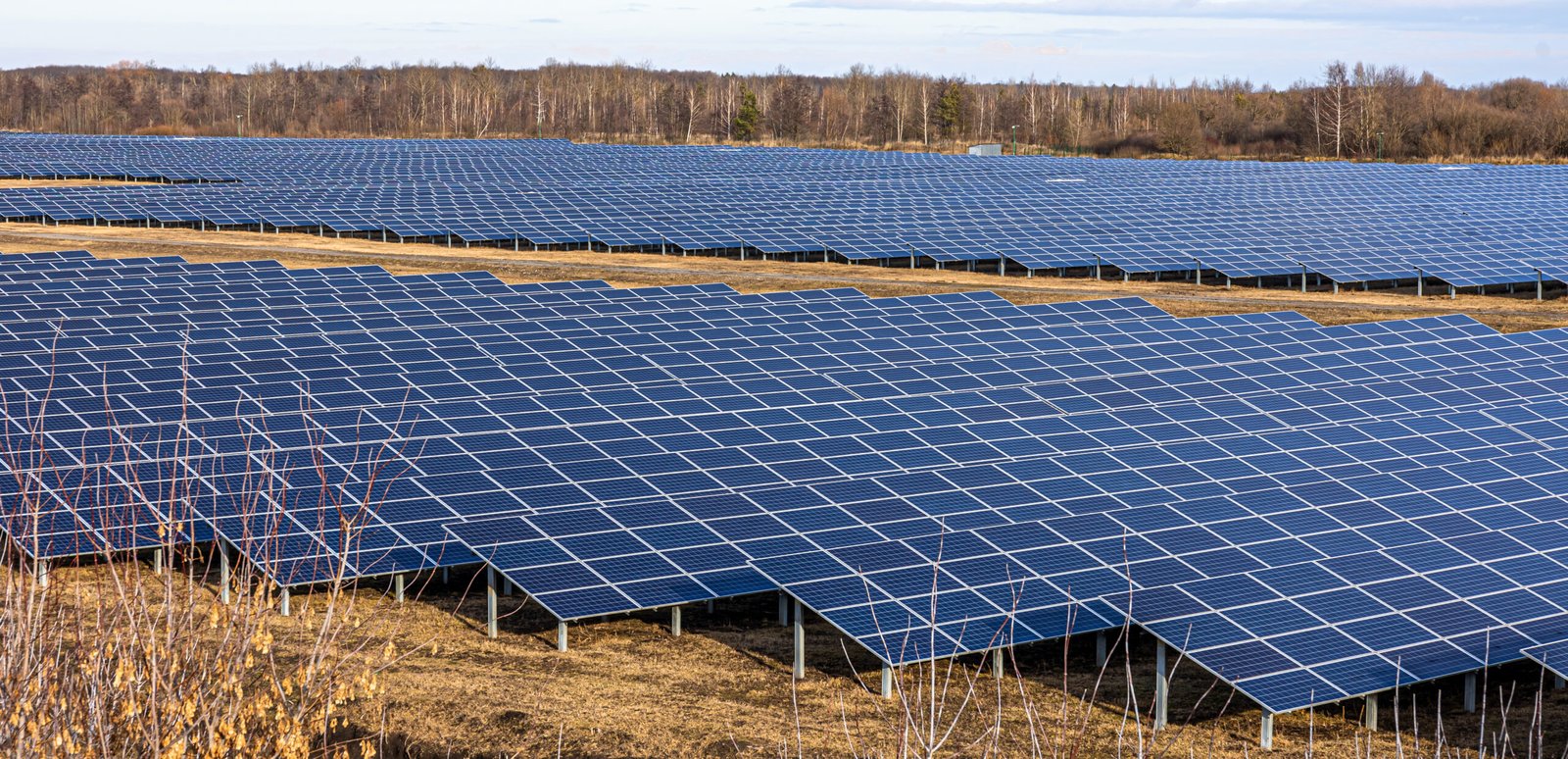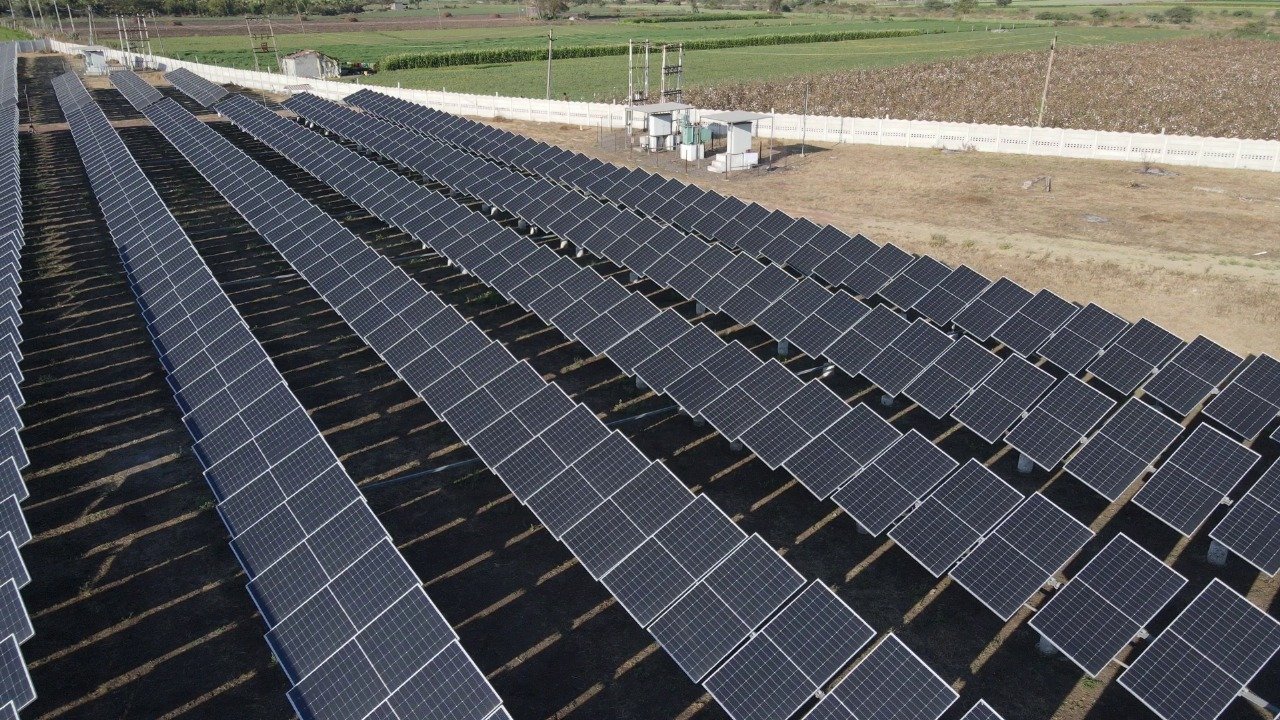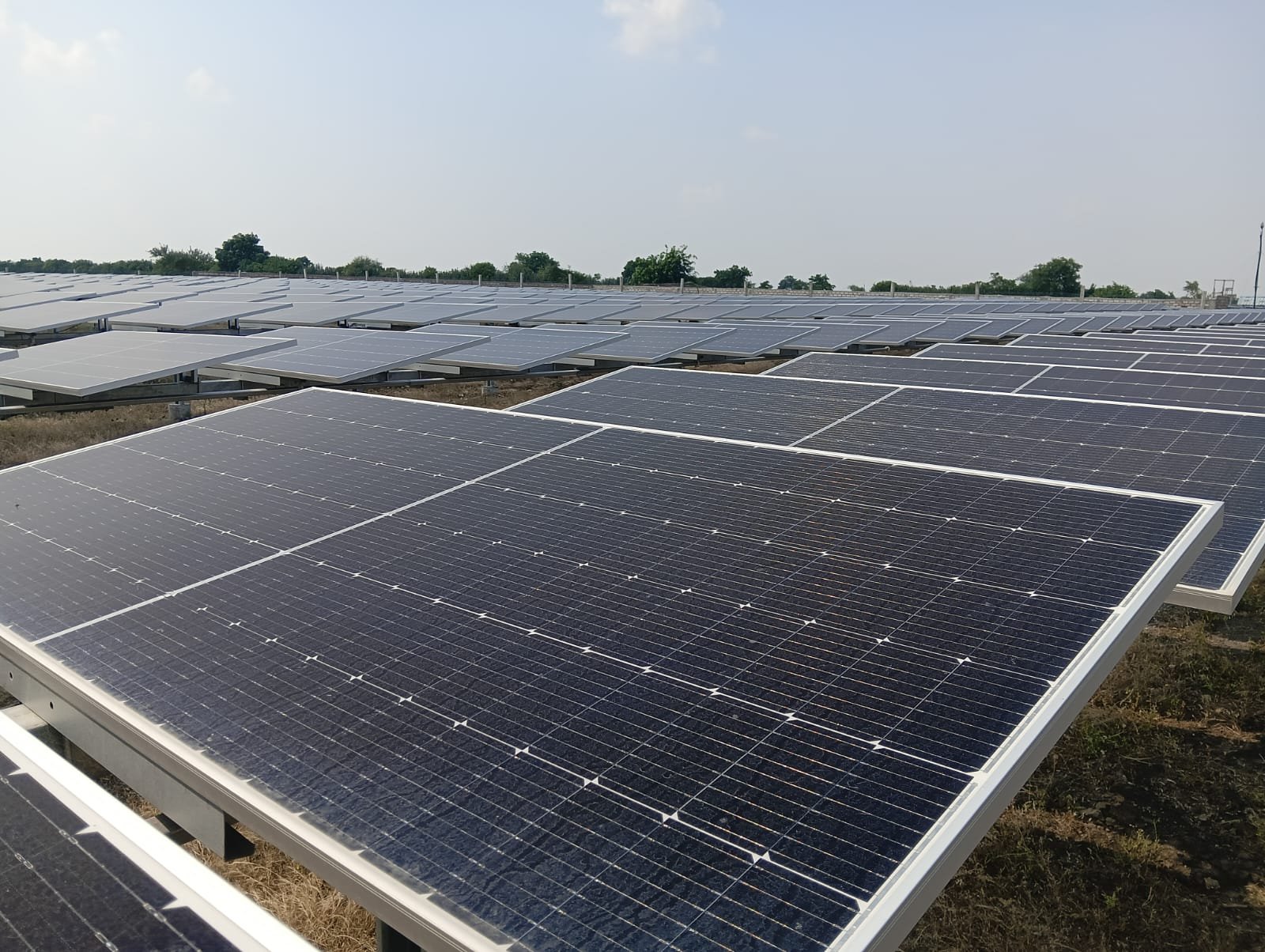At Soleos Solar, we believe in a cleaner, greener world fueled by renewable energy. Solar sustainable energy is not just a trend—it’s the future. As we face rising energy demands, environmental concerns, and the depletion of fossil fuels, solar energy emerges as the most reliable, eco-friendly, and scalable solution to power homes, businesses, and industries.
Table of Contents
In this blog, we dive deep into everything you need to know about solar sustainable energy—its meaning, benefits, working principles, real-world applications, and the path forward. This detailed guide aims to not only inform but also inspire you to embrace solar power as the ultimate clean energy source.
What is Solar Sustainable Energy?
Solar sustainable energy refers to the process of harnessing the sun’s natural light and heat to generate electricity or thermal energy in a way that is renewable, environmentally friendly, and long-lasting. It’s called “sustainable” because it meets current energy needs without depleting resources or harming the environment, ensuring that future generations can also benefit from it.
Why Solar Energy is Sustainable
Solar energy is considered one of the most sustainable sources of power available today. It’s renewable, widely accessible, and environmentally responsible. Let’s break down exactly why solar energy is sustainable and how it contributes to a cleaner, greener future.
1. Infinite Resource: Unlike fossil fuels (coal, oil, natural gas), which are finite and depleting, the sun is an inexhaustible source of energy. It will continue to shine for at least another 5 billion years, making solar energy a permanently renewable resource.
2. Zero Greenhouse Gas Emissions During Operation: Once a solar panel system is installed, it generates electricity without producing carbon dioxide (CO₂) or other greenhouse gases. This makes it a clean energy solution that doesn’t contribute to climate change.
3. Reduces Reliance on Fossil Fuels: Solar energy helps diversify the energy mix and reduce dependence on polluting and geopolitically unstable fossil fuel markets. This transition promotes energy independence and stability.
4. Low Water Usage: Traditional power generation (like coal or nuclear) often requires large amounts of water for cooling. In contrast, solar photovoltaic (PV) systems use little to no water, making them ideal for drought-prone areas.
5. Minimal Operating Costs: After the initial investment in solar panel installation, the ongoing costs are extremely low. Solar systems require minimal maintenance and have long lifespans—often 25+ years—making them cost-effective over time.
6. Eco-Friendly Manufacturing Advancements: While solar panels do require energy to produce, manufacturers are increasingly using green production methods and recyclable materials. Over its lifetime, a solar panel generates far more energy than it took to produce—this is called a positive energy balance.
7. Supports Sustainable Development Goals (SDGs): Solar energy aligns with the United Nations’ Sustainable Development Goals, especially:
- SDG 7: Affordable and Clean Energy
- SDG 13: Climate Action
- SDG 11: Sustainable Cities and Communities
8. Scalable and Versatile: Solar systems can be installed on:
- Residential rooftops
- Commercial buildings
- Solar farms
- Remote and rural locations without grid access
This versatility and scalability make solar energy a sustainable solution for all types of communities, from dense cities to off-grid villages.
9. Encourages Green Jobs and Economic Growth: The solar industry is a major job creator across installation, manufacturing, engineering, maintenance, and research sectors. This contributes to sustainable economic growth and innovation.
10. Promotes Long-Term Environmental Stewardship: By reducing pollution, preserving biodiversity, and mitigating climate change impacts, solar energy helps protect ecosystems and public health—key aspects of sustainability.

How Solar Panels Work
Solar panels work by converting sunlight into electricity using a process called the photovoltaic effect. These panels are made up of many solar cells, which are the actual devices that do the energy conversion. Let’s break it down in a clear, easy-to-understand way:
1. Sunlight Hits the Solar Panel: Solar panels are typically installed on rooftops or open fields to capture direct sunlight. Each panel contains photovoltaic (PV) cells—usually made from silicon, a semiconductor material.
2. The Photovoltaic Effect Begins: When sunlight (photons) hits the PV cells:
- The energy from the sunlight knocks electrons loose from atoms in the silicon.
- This movement of electrons creates an electric current—this is called direct current (DC) electricity.
This is the heart of how solar energy is converted to electricity.
3. Electricity Is Converted from DC to AC
- Most homes and businesses use alternating current (AC) electricity.
- So, the solar system includes a solar inverter (or micro-inverters) that convert the DC electricity into AC.
Now the electricity is ready to power your lights, appliances, and devices.
4. Electricity Powers Your Home or Business
- The AC electricity flows into your electrical panel (breaker box) and distributes power throughout your home or facility.
- If you’re generating more electricity than you need, it can go back to the grid or be stored in solar batteries for later use.
5. Optional: Store Extra Energy in Batteries
- If your system includes a solar battery, any extra energy your panels produce during the day is stored.
- You can then use this stored energy at night or during cloudy days—increasing your energy independence.
6. Excess Power Can Be Sent to the Grid
- In grid-tied systems, surplus electricity can be sent back to the local power grid.
- You may receive credits on your utility bill through a process called net metering
Environmental Benefits of Solar Energy
Solar sustainable energy offers a wide range of environmental benefits, making it a vital pillar of sustainable development and climate action. By replacing fossil fuels with clean, renewable power from the sun, solar sustainable energy supports a healthier planet through the following key contributions:
1. Reduces Greenhouse Gas Emissions
One of the most significant advantages of solar sustainable energy is its ability to generate electricity without emitting carbon dioxide (CO₂) or other greenhouse gases during operation. This clean production method helps mitigate the effects of climate change. For example, between 2019 and 2022, the increased adoption of solar energy in the U.S. led to a substantial reduction in CO₂ emissions—comparable to removing millions of vehicles from the roads annually.
2. Improves Air Quality
Unlike traditional fossil fuel-based power plants, solar sustainable energy does not emit harmful pollutants such as sulfur dioxide (SO₂), nitrogen oxides (NOₓ), or fine particulate matter (PM2.5). These pollutants are directly linked to respiratory illnesses, cardiovascular diseases, and premature deaths. Transitioning to solar sustainable energy significantly improves air quality and leads to better public health outcomes for communities.
3. Conserves Water Resources
Conventional power generation methods like coal and nuclear require large amounts of water for cooling purposes. In contrast, solar sustainable energy, particularly photovoltaic (PV) systems, operates with little to no water usage. This helps conserve valuable freshwater resources—especially crucial in drought-prone or arid regions—and reduces stress on existing water supplies.
4. Minimizes Habitat Disruption
Solar sustainable energy solutions such as rooftop solar systems utilize existing infrastructure, reducing the need for land acquisition and habitat disruption. Even utility-scale solar farms can be designed to minimize environmental impact by being installed on degraded lands or integrated with agricultural activities (agrivoltaics). This thoughtful deployment supports biodiversity and responsible land use.
5. Promotes Sustainable Resource Use
Unlike fossil fuels, which are finite and polluting, solar sustainable energy is abundant, renewable, and readily available worldwide. By harnessing the power of the sun, we reduce our reliance on nonrenewable resources and move toward a more sustainable, secure, and resilient energy future.
6. Encourages Recycling and Waste Reduction
Advancements in solar panel technology and recycling programs are addressing concerns about end-of-life disposal. Efforts are underway to recycle solar panels, recover valuable materials, and reduce waste, further enhancing the environmental benefits of solar energy.

Solar Energy vs Other Renewable Sources
Resource Availability
Solar Energy
- Available in almost every region on Earth.
- Highly abundant, especially in tropical and arid regions.
- Works even in cloudy conditions (though at reduced efficiency).
Wind Energy
- Depends on wind patterns, which vary greatly by geography.
- Offshore wind offers more consistency but at higher costs.
Hydropower
- Requires rivers or elevation changes.
- Limited to suitable geographic regions.
Biomass
- Depends on organic waste availability, which is more location-specific.
- Not infinitely renewable without careful land management.
Geothermal
- Limited to tectonically active zones or places with natural hot springs.
- Not viable in all countries.
Cost & Installation
Solar Energy
- Installation cost has dropped over 80% in the last decade.
- Easy to scale from rooftops to solar farms.
- Low maintenance and quick ROI.
Wind Energy
- Higher upfront cost than solar, especially offshore.
- Requires larger land space and complex infrastructure.
Hydropower
- Expensive dam construction.
- Long-term projects with environmental concerns.
Biomass
- Cost-effective in waste-rich regions but needs consistent supply.
- Requires combustion or gasification systems.
Geothermal
- High drilling and setup costs.
- Very low operating costs after setup.
Environmental Impact
Solar Energy
- No emissions during operation.
- Minimal land use if installed on rooftops or barren land.
- Panels are recyclable (though improvement needed).
Wind Energy
- May impact bird and bat populations.
- Noise and visual impact can be local concerns.
Hydropower
- Alters aquatic ecosystems.
- Can cause displacement and sedimentation issues.
Biomass
- Emits CO₂ if not managed sustainably.
- May lead to deforestation or food competition.
Geothermal
- Low emissions.
- May release underground gases if not well-controlled.
Energy Efficiency & Reliability
Solar Energy
- Efficiency ranges from 15–22% for most panels.
- Intermittent – needs storage or backup at night/cloudy weather.
Wind Energy
- Efficiency depends on wind consistency.
- Capacity factor (actual output vs potential) up to 45%.
Hydropower
- Very reliable and efficient – capacity factor can reach 50–60%.
- Base-load power.
Biomass
- Efficiency can reach 25–30%.
- Dispatchable energy – works like conventional plants.
Geothermal: High capacity factor (~90%) and extremely reliable.
Scalability and Flexibility
Solar Energy
- Highly scalable – from portable panels to megawatt-scale farms.
- Ideal for decentralized and off-grid systems.
Wind Energy
- Large turbines make small-scale use difficult.
- Needs consistent wind flow – less flexible in urban zones.
Hydropower
- Large-scale only – minimal small-unit flexibility.
- Not ideal for residential or off-grid use.
Biomass
- Mostly used in industrial or community-scale plants.
- May require constant biomass supply chain.
Geothermal
- Limited scalability for homes.
- Suited to grid-level supply in geothermal regions.
Ways Solar Sustainable Energy
1. Reducing Greenhouse Gas Emissions
Traditional energy sources, particularly coal and natural gas, release large amounts of carbon dioxide (CO₂) and other harmful gases, which are the leading contributors to global warming. In contrast, solar sustainable energy produces zero emissions during its operation. For instance, a standard 5 kW home solar system can offset over 6 tons of CO₂ annually. Widespread adoption of solar sustainable energy could drastically reduce global carbon emissions by billions of tons each year, aligning directly with international climate goals and helping mitigate the effects of climate change.
2. Lowering Air and Water Pollution
Solar sustainable energy operates cleanly and silently, with no harmful pollutants released into the air. Unlike fossil fuel plants, which emit harmful particulates, solar panels generate electricity without polluting the air. Additionally, solar energy systems do not require water for operation, unlike coal and nuclear plants, which consume billions of gallons of water annually. By avoiding toxic emissions and conserving precious water resources, solar sustainable energy helps ensure cleaner air and water for all.
3. Promoting Energy Independence
Reliance on imported fossil fuels makes nations vulnerable to geopolitical conflicts and price fluctuations. In contrast, solar sustainable energy is abundant, especially in sunny regions such as India, Australia, and various African nations. Solar energy is locally generated, reducing the need for costly imports. Its scalability allows homes, businesses, and entire regions to become self-reliant. By adopting solar sustainable energy, countries can secure their energy future and reduce their dependence on foreign oil and gas.
4. Boosting Green Jobs and the Economy
The solar industry is a significant driver of job creation. From manufacturing and installation to research and development, solar sustainable energy provides millions of jobs globally. The industry is expected to grow by over 15% annually in the coming decade, with every megawatt of solar power installed supporting 5–10 full-time jobs. Investing in solar sustainable energy not only helps the environment but also promotes economic growth through the development of a thriving clean-energy workforce.
5. Empowering Communities with Access to Energy
Over 770 million people worldwide still lack access to reliable electricity. Solar sustainable energy offers a decentralized, affordable, and sustainable solution. Off-grid solar systems can bring electricity to rural and remote areas, while solar-powered schools, clinics, and farms can significantly improve community life. With the support of NGOs and governments, solar sustainable energy is helping provide energy equity to underserved communities, empowering lives and fostering economic development.
6. Driving Innovation for a Cleaner Tomorrow
Solar sustainable energy is rapidly evolving with technological advancements. High-efficiency panels, solar glass, and flexible PV films are making solar energy more accessible and efficient. Solar batteries and hybrid systems are enabling 24/7 renewable power, while smart grids and solar IoT are optimizing energy distribution and monitoring. These innovations are ensuring that solar sustainable energy continues to improve, driving a cleaner and more sustainable future for generations to come.

Challenges and Solutions in Solar Adoption
| Challenge | Solution |
|---|---|
| High Upfront Costs | – Government incentives, subsidies, and tax credits – Financing options such as solar leasing and Power Purchase Agreements (PPAs) – Cost reduction through advancements in solar technology and manufacturing. |
| Intermittency and Reliability of Solar | – Use of energy storage systems (e.g., lithium-ion batteries) – Development of smart grids and demand-response technologies – Hybrid systems combining solar with other renewable sources (e.g., wind). |
| Lack of Skilled Workforce | – Investment in vocational training programs and certification courses – Job creation within the solar sector – Enhanced education and industry partnerships to develop skilled professionals. |
| Regulatory and Policy Barriers | – Streamlining permitting and licensing processes – Implementing long-term, stable policies supporting solar, such as feed-in tariffs and net metering – Creating public-private partnerships to resolve challenges. |
| Land Use and Space Limitations | – Promoting dual-use systems (e.g., agrivoltaics) to combine solar and agriculture – Installing solar on rooftops and buildings – Utilizing brownfields and unused industrial land for solar farms. |
| Public Awareness and Misinformation | – Public awareness campaigns about the benefits of solar energy – Showcasing successful case studies and testimonials – Engaging media for positive solar coverage and education. |
| Cost of Energy Storage | – Reducing the cost of energy storage with improved technologies – Offering tax credits or rebates for energy storage systems – Exploring alternative storage solutions like hydrogen and pumped hydro storage. |
How Soleos Solar Is Leading the Charge
Soleos Solar Energy Pvt. Ltd., established in 2012 and headquartered in Ahmedabad, India, is a leading innovator in the solar energy industry, providing solar sustainable energy solutions worldwide. The company specializes in advanced solar technologies, including high-performance bifacial and monofacial half-cut solar modules, as well as proprietary solar trackers that enhance energy output by up to 35%. Soleos offers comprehensive services such as Solar EPC, financing, PPAs, and Operations & Maintenance, with a focus on deploying captive solar power plants that help businesses reduce energy costs and boost sustainability through solar sustainable energy.
With a strong presence in both India and international markets, Soleos Solar is actively contributing to India’s Sustainable Development Goals, particularly in advancing clean energy. Recognized for its commitment to excellence, the company has set notable performance records and earned the “Best Brand Award” in 2021. Through its cutting-edge products and dedication to environmental responsibility, Soleos Solar is driving the global transition to a cleaner, solar sustainable energy future.
Conclusion
Soleos Solar Energy Pvt. Ltd. stands at the forefront of the solar sustainable energy revolution, delivering innovative technologies and sustainable solutions to meet the increasing demand for clean energy. With advanced solar modules, innovative solar trackers, and comprehensive services, Soleos is empowering businesses and communities to reduce their carbon footprint and transition to a greener future. The company’s global presence and unwavering commitment to environmental sustainability, alongside its active role in advancing India’s Sustainable Development Goals, position Soleos Solar as a key driver in the global shift to solar sustainable energy.
Join the Clean Energy Movement Today! Be part of the solar sustainable energy revolution with Soleos Solar. Explore our innovative solar solutions and discover how we can help you reduce energy costs while contributing to a greener, more sustainable future.
